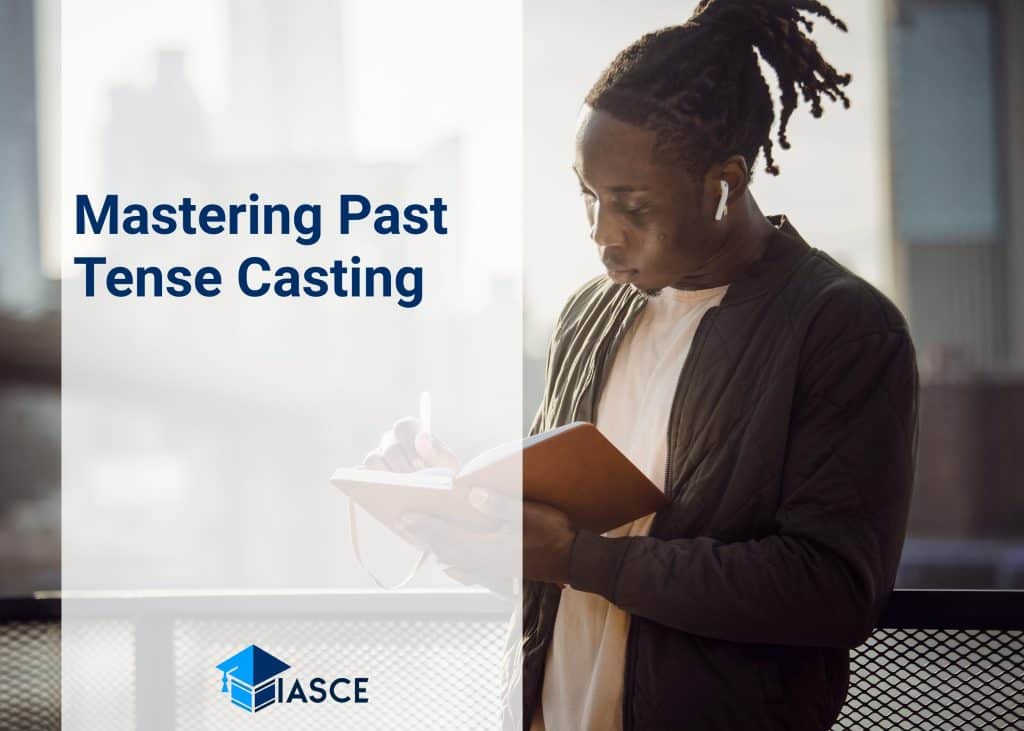Mastering the past tense in English, specifically the cast past tense, is a challenge that many of us face. It’s an area of grammar that often trips up even the most seasoned English speakers and writers. But don’t worry, I’m here to guide you through it.
In my experience, understanding how to use the cast past tense effectively can dramatically improve your written and spoken English. It adds precision and clarity to your communication – essential tools for any successful conversation or piece of writing.
The focus of this deep dive is to help you master this grammatical conundrum once and for all. Let’s roll up our sleeves and get started on this exciting journey into the nuances of English grammar.
Understanding the Past Tense Concept
When it comes to mastering English grammar, understanding the past tense concept is a pivotal step. It’s an area that can often trip up learners, but I’m here to shed some light on its intricacies.
The past tense in English is primarily used to talk about events or actions that happened at a specific time in the past. We’re not just referring to yesterday or last week – it could be a minute ago, or even hundreds of years back!
Let’s take a look at some examples:
| Present Tense | Past Tense |
|---|---|
| run | ran |
| eat | ate |
But wait, there’s more! It turns out there are four types of past tenses in English: simple past, past continuous (or progressive), past perfect and past perfect continuous. Each one has its own rules and uses.
- Simple Past: This describes something that happened once in the past. For instance, ‘I ate lunch.’
- Past Continuous: This refers to an ongoing action that was interrupted by another event. An example would be ‘I was eating lunch when my friend called.’
- Past Perfect: Here we’re talking about an action completed before another took place (‘I had eaten lunch when my friend called.’)
- Past Perfect Continuous: This indicates an action continuing up until another event (‘I had been eating lunch when my friend called.’)
One thing you’ll notice as you dive into these different tenses is how richly they can express nuances of time and sequence – this is one reason why I find them so fascinating! And while they might seem daunting initially, with practice, their usage will start feeling natural.
Now you’ve got a basic grasp on what makes up the world of “past tense” in English. Remember: keep practicing your conjugation skills and soon enough you’ll master this vital aspect of our language!
Applying the Past Tense in Unique Scenarios: A Closer Look
Mastering past tense doesn’t just mean knowing when to add -ed at the end of a word. It’s about understanding how to twist and turn it, applying it in unique scenarios that’ll leave your readers impressed with your command over English grammar.
Let’s take an example: indirect speech. When you’re recounting what someone else said, the verbs often shift back into the past tense. Even if they’re talking about something happening right now! Picture this scenario:
- Direct Speech: “I am going,” she says.
- Indirect Speech: She said she was going.
Notice anything? The present tense verb “am” changes to the past tense “was” in indirect speech. Tricky, right?
But wait, there’s more – let’s dive into conditional sentences. These are sentences where one action depends on another. And guess what? The past tense plays a key role here too!
| Condition Type | Example |
|---|---|
| Real Conditional | If I worked harder, I could pass the test (I didn’t work hard enough) |
| Unreal Conditional | If I had worked harder, I would have passed the test (It’s too late now) |
See how both conditions use some form of past tense despite being completely different situations? That’s just one of those quirks of English grammar for you!
Now let’s talk reporting questions. This is another area where our friend ‘past tense’ shines bright.
- Direct Question: “Where do you live?” he asked.
- Reported Question: He asked me where I lived.
Even though we’re talking about something current – my living situation – it still gets reported in past tense!
This might seem complicated at first glance but trust me; once you get a hang of these rules and start applying them consciously while speaking or writing, mastering English grammar becomes less daunting and more exciting!
Wrapping Up: Mastering the Cast Past Tense
If you’ve made it this far with me, you’re well on your way to mastering the cast past tense. Remember, practice makes perfect. It’s not about memorizing rules and regulations, but rather understanding how they work in context.
Let’s recap some of the key points we’ve learned:
- The word ‘cast’ is one of those unique verbs that doesn’t change in its past tense form.
- It’s crucial to use ‘cast’ correctly within sentences to avoid confusion.
- Context plays a significant role in determining whether ‘cast’ is being used as a present or past tense verb.
Here are a few more examples for clarity:
| Present Tense | Past Tense |
|---|---|
| I cast my vote today. | I cast my vote yesterday. |
| She casts a long shadow at noon. | She cast a long shadow at sunset yesterday. |
This table should help further cement your understanding of how ‘cast’ operates across different tenses.
Don’t sweat it if you’re still finding it tricky – English grammar can be complex and takes time to master fully. Keep practicing, keep learning, and remember that even native speakers stumble over their language’s quirks from time to time!
With patience and dedication, mastering the cast past tense will become second nature before you know it!

